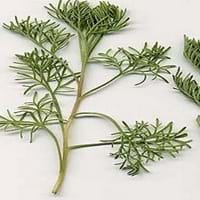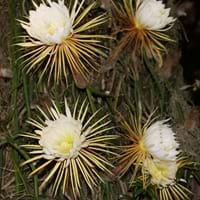Life Span
Perennial
Perennial
Type
Shrub
Cactus, Flowering Plants
Origin
Southern Europe
South America, Argentina, Brazil
Types
not available
Not available
Habitat
Temperate Regions
Dry Forest, limestone outcrops, Subtropical climates
USDA Hardiness Zone
5-8
10-14
Sunset Zone
2b, 3a, 3b, 4, 5, 6, 7, 8, 9, 10, 11, 12, 13, 14, 15, 16, 17, 18, 19, 20, 21, 22, 23, 24
H2, 13, 16, 17, 21, 22, 23, 24
Habit
Upright/Erect
Upright/Erect
Minimum Height
Not Available
Minimum Width
Not Available
Flower Color
Yellow, Gray
White, Light Green
Flower Color Modifier
Not Available
Bicolor
Fruit Color
Non Fruiting Plant
Orange, Pink, White, Yellow
Leaf Color in Spring
Gray Green
Not Available
Leaf Color in Summer
Gray Green
Not Available
Leaf Color in Fall
Gray Green
Not Available
Leaf Color in Winter
Not Available
Not Available
Leaf Shape
Long hair-like leaves
Not Available
Plant Season
Spring, Summer, Fall
Spring, Summer, Fall, Winter
Sunlight
Full Sun
Full Sun
Type of Soil
Loam
Loam, Sand
The pH of Soil
Neutral
Acidic, Neutral, Alkaline
Soil Drainage
Well drained
Well drained
Bloom Time
Late Summer
Late Spring, Early Summer
Tolerances
Not Available
Drought, Salt
Where to Plant?
Ground, Pot
Container, Ground
How to Plant?
Cuttings, Seedlings
Cuttings
Plant Maintenance
Medium
Medium
Watering Requirements
Average Water Needs, Keep the Soil well drained
Average Water Needs, Distilled Water, Needs good drainage
In Summer
Lots of watering
Lots of watering
In Spring
Moderate
Moderate
In Winter
Average Water
Average Water
Soil pH
Neutral
Acidic, Neutral, Alkaline
Soil Type
Loam
Loam, Sand
Soil Drainage Capacity
Well drained
Well drained
Sun Exposure
Full Sun
Full Sun
Pruning
Cut back old stems to the ground, Remove damaged leaves, Remove dead branches, Remove dead leaves
Remove damaged leaves, Remove dead branches, Remove dead leaves
Fertilizers
All-Purpose Liquid Fertilizer, Complete balanced fertilizer
All-Purpose Liquid Fertilizer
Pests and Diseases
Free of serious pests and diseases
Bacterial Stem Rot, Mealy bugs, Red spider mite, Scale
Plant Tolerance
Drought
Drought
Flowers
Insignificant
Showy
Flower Petal Number
Not Available
Semi-Double
Foliage Texture
Medium
Bold
Foliage Sheen
Matte
Not Available
Attracts
Not Available
Birds, Spider Mites
Allergy
Skin irritation
Avoid during Pregnancy, hallucinations
Aesthetic Uses
Farmland, small hedge, Wild gardens
Showy Purposes
Beauty Benefits
Not Available
Not Available
Environmental Uses
Air purification
Air purification
Medicinal Uses
Antiseptic, Digestive, Liver problems, Skin Disorders, Tonic
Antidiabetic, Rheumatism, Soothing and relieving pain
Part of Plant Used
Branch, Fibres, Flower Stalk, Gum, Leaves, Twigs
Flowers, Leaves
Other Uses
Oil is used in mosquito repellents, Used for fragrance, Used to make hair tonic
Traditional medicine, Used for its medicinal properties, Used in herbal medicines
Used As Indoor Plant
No
Yes
Used As Outdoor Plant
Yes
Yes
Garden Design
Herb, Vegetable, Mixed Border, Rock Garden, Wall
Container, Edible, Hedges, Houseplant, Rock Garden, Wall, Tropical
Botanical Name
ARTEMISIA abrotanum
Selenicereus grandiflorus
Common Name
lad's love , southern wormwood , old man , boy's love , appleringie , sitherwood
Queen of the night, large-flowered cactus, sweet-scented cactus, vanilla cactus
In Hindi
southernwood
रात की रानी
In German
Eberraute
Königin der Nacht
In French
aurone ou citronnelle
Reine de la nuit
In Spanish
Artemisia abrotanum
Reina de la noche
In Greek
Artemisia abrotanum
Βασίλισσα της νύχτας
In Portuguese
Abrótano
Rainha da noite
In Polish
Bylica boże drzewko
Królowa nocy
In Latin
Southernwood
Domina noctis
Phylum
Magnoliophyta
Magnoliophyta
Class
Magnoliopsida
Magnoliopsida
Order
Asterales
Caryophyllales
Family
Asteraceae
Cactaceae
Genus
Artemisia
Selenicereus
Clade
Angiosperms, Asterids, Eudicots
Angiosperms, Core eudicots, Eudicots
Tribe
Anthemideae
Hylocereeae
Subfamily
Asteroideae
Cactoideae
Number of Species
Not Available
Importance of Southernwood and Queen of the Night
Want to have the most appropriate plant for your garden? You might want to know the importance of Southernwood and Queen of the Night. Basically, these two plants vary in many aspects. Compare Southernwood and Queen of the Night as they differ in many characteristics such as their life, care, benefits, facts, etc. Every gardener must at least have the slightest clue about the plants he wants to plant in his garden. Compare their benefits, which differ in many ways like facts and uses. The medicinal use of Southernwood is Antiseptic, Digestive, Liver problems, Skin Disorders and Tonic whereas of Queen of the Night is Antidiabetic, Rheumatism and Soothing and relieving pain. Southernwood has beauty benefits as follows: Not Available while Queen of the Night has beauty benefits as follows: Not Available.
Compare Facts of Southernwood vs Queen of the Night
How to choose the best garden plant for your garden depending upon its facts? Here garden plant comparison will help you to solve this query. Compare the facts of Southernwood vs Queen of the Night and know which one to choose. As garden plants have benefits and other uses, allergy is also a major drawback of plants for some people. Allergic reactions of Southernwood are Skin irritation whereas of Queen of the Night have Avoid during Pregnancy and hallucinations respectively. Having a fruit bearing plant in your garden can be a plus point of your garden. Southernwood has no showy fruits and Queen of the Night has showy fruits. Also Southernwood is not flowering and Queen of the Night is not flowering . You can compare Southernwood and Queen of the Night facts and facts of other plants too.





